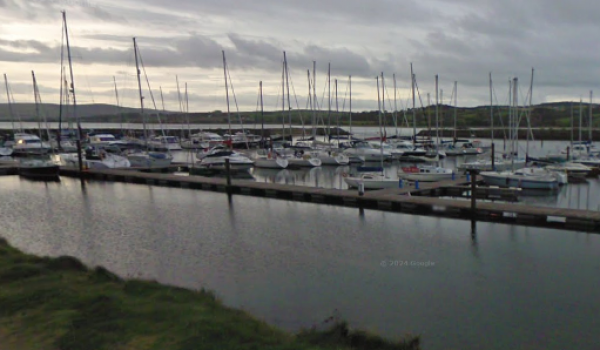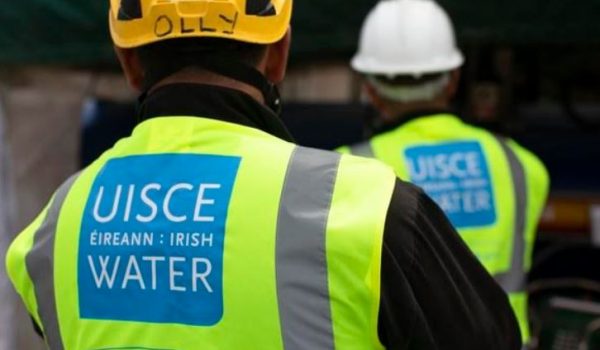Patrick Freyne spends a day on the set of the hit fly-on-the-wall series, to see what makes it tick
 Gogglebox Ireland: Danielle, Laura and Des Grufferty in front of the tiny cameras. Photograph: Brenda Fitzsimons
Gogglebox Ireland: Danielle, Laura and Des Grufferty in front of the tiny cameras. Photograph: Brenda Fitzsimons
The man by the window controls two unobtrusive cameras known as hotheads. Next to him a woman types on a laptop. Near the door another man tweaks the microphones through which they are eavesdropping and minimises background noise. A fourth man writes everything of significance in a hardback logbook.
“I sometimes feel like I’m in that film The Lives of Others,” the man with the log book says. His name is Frank Agnew, and he’s a television producer and director. “But we’re not the Stasi. We’re just making Gogglebox.”
Yes, I’m in the Gruffertys’ house in Athy a week before the second series of the show. This is the Irish version of the fly-on-the-wall television-eating-itself franchise based on the notion that families on their couches watching television want to watch other, slightly better families on their couches watching television.
“It’s a terrible idea,” Darren Smith, managing director of Kite Entertainment, the production company, says. “It really shouldn’t work.”
It seems that Kite is bending the rules slightly by allowing me to watch the process. There are a lot of rules. Earlier that day, in an editing facility in Dublin, the series producer, Simon Proctor, shows me the substantial Gogglebox bible created by the originators of the franchise, Studio Lambert, in the UK.
On the stairs there are sheets of paper featuring notable tweets about the show. In the office in which we talk there’s a wall of photographs of the participating households. Next door there’s a room full of researchers picking television clips to show them, and upstairs four editing suites are operating at full tilt.
“Each episode is made from around 100 hours of footage,” Proctor says. “The most important job is already done: finding the cast.” There are five new families this year, including a grandson and grandmother from Clare, and two of the previous households are, in Smith’s word, “resting”.
When the producers refer to cast members they use Brangelina-style portmanteau names. Angela and Eileen become Angeen. Tracy and Anita become Tranita.
How did they find them? It’s partly through call-outs on national radio and television, Smith says. More than 3,000 people got in touch that way, although this isn’t always useful.
“What we found is that the better cast members tend to be almost reticent to do it,” Proctor says.
“People who say, ‘I’d like to be on Gogglebox. I was a background dater on First Dates last month,” Smith says. “We don’t want them . . . There’s almost a rule that if you want to be on Gogglebox you shouldn’t be on Gogglebox.”
Street casting
Their most successful participants are the result of street casting: researchers hit the streets, eavesdrop on buses and walk into hairdressers, asking them about their most voluble clients. One of the Tully twins was found at an agricultural show. The researcher nearly bit his hand off on discovering that he had an identical twin. Angela and Eileen and their Michael Tea Higgins tea cosy were discovered at a retirement club. Initially, Darren Smith says, they were a trio.
They got rid of one of them?
“We do not kill old people,” he says. “But after we did a test shoot [the third lady] said, ‘I really enjoyed that. Now, I wouldn’t be doing it again, mind.’ She had just come in for the craic. I don’t think she quite got the concept.”
Once they have a longlist of potential cast members the producers interview them on Skype, throwing out conversation points and showing them pictures to get reactions and see how they interact.
When do they know they have someone they want?
“Well, we showed the Cabra girls a picture of Hillary Clinton,” Smith says. “One of them said, ‘Oh, that’s Phil Clinton’s sister.’ ” He laughs. “Brilliant. She had us at ‘Phil Clinton’.
It’s all about the casting, Smith says. “We’re very mindful of them and very mindful of social media’s response to them. Studio Lambert prepared us for the worst-case scenarios.”
Like what? “That they will become stars, become monsters, and that we’ll need to manage them.”
Gogglebox Ireland pays participants a small “facilities fee” for the use of the family home, but in the UK many of the cast members have received lucrative offers from elsewhere.
“The minute they become celebrities it’s not the same,” Smith says. “So the rule is that [if you do other shows] then you’re not on Gogglebox any more. Cast members can’t do promos. They can’t do interviews.”
He is hopeful that the same issues will not arise in Ireland, as we don’t have the same predatory tabloid culture nor the same number of “vulture agents” as they have in the UK.
From its roots as a more staid social experiment – “The early episodes feel very different if you watch them now,” Proctor says – there are more than a dozen versions of Gogglebox worldwide. The Australian one features more beer drinking. The South African one is more political. The American version is called The People’s Couch and features an immaculately groomed and made-up cast.
Smith says that he would love to do a special where he shows the British cast uniquely Irish television, like The Rose of Tralee and The Late Late Toy Show – “Gogglebox Ireland: What the Brits Think” – but he doesn’t know if it will ever happen.
The Irishness of Kite’s version is important to its makers. Irish programmes on Gogglebox work better with both the cast and viewers at home. The producers also personalise the selections a little.
“We know Des Grufferty is mad into cooking, so we’d always get him cooking shows,” Grainne Ahern, the senior producer, says. “And the Cabra girls and Anita and Tracy are very emotional, so anything emotional works for them. Not to be cynical about it.”
“God forbid,” Darren Smith says. “No cynicism. Not on television!”
The Irish cast also need less prompting than their UK counterparts, according to Proctor.
“Those preambles before we go into the programme, with Angela and Eileen chatting about their week or whatever, in the UK those are very produced . . . Here we just have to go, ‘Tell us about your week, Eileen and Angela,’ and let them go.”
Filming at the Gruffertys’
Watching the recording at the Gruffertys’ house a few hours later, this seems true enough. The shoot is long, with drama occasionally provided by a rattling letter box (the sound man goes down to muffle it with his woolly hat) and an inconsistently placed cushion (“that wasn’t there before,” the researcher says).
Occasionally Frank Agnew will prompt the family with a question – “What were you like when you were children, Laura and Des?” – but they seem to have no problem nattering away without him.
During a break the Gruffertys’ sitting room looks like a regular sitting room except for two tiny hothead cameras to the side of the television and two glaring lights rigged behind it.
“Herself and myself have given up the cigarettes,” Des Grufferty, who sporadically puffs on an electronic cigarette, says. “So there might be more anger this year.”
It’s the first day back filming for the new season. “Have you missed us?” Darren Smith asks.
“Ferocious,” Des says. “Honestly. The last filming day was nearly like a death in the family.”
“I cried my eyes out,” Laura, his wife, says. The crew “are like family. They’ve become like friends.”
Is filming for five hours or so every week not a chore? Laura shakes her head. “When Gogglebox comes to our house it’s the very same as a dinner party,” she says.
Des whips two big trays of banoffee from the fridge. (One falls, and he miraculously saves it from splattering on the floor.) He has also prepared trays of chicken, potato wedges, home-made coleslaw and cheese and sausage rolls.
“Des always feeds us,” Agnew says.
“Make sure you write about this, so other families get the hint,” Smith adds.
The Gruffertys have three other children. The youngest two stay with a friend around the corner when it’s filming day. Their oldest daughter didn’t want to be involved, but she’s starting to change her mind.
Stopped on every aisle
Why do they do the show? Des explains that Laura always talked about wanting to be on a reality-television programme, and when he heard the call-out on The Ray D’Arcy Show he emailed straight away.
What do their neighbours think?
“A lot of people in Athy adore it,” Des says. They say, “ ‘Thank God someone in Athy is doing something on television.’ ”
“People at school want me to wear my school uniform,” his daughter Danielle says. “But I don’t know.”
The other day, walking around Liffey Valley Shopping Centre in Dublin with her mother, Danielle says, they were stopped on every aisle.
Recently a new restaurant opened in nearby Newbridge, and when the Gruffertys turned up at the door they were ushered to a table and given wonderful service. “People kept getting turned away at the door,” Des says, “and we couldn’t figure out why.” It turned out that it was an invitation-only charity event.
“The girl at the door must have thought we were on the guest list,” Laura says.
“I heard that you insisted they clear the restaurant,” Darren Smith says.
Now there’s more television to be watched. Des sends Darren back to the Dublin studio with a tray of sausage rolls, chicken and banoffee. I ask Smith why Gogglebox works. “Because it’s warm, it’s funny and it’s authentic,” he says. “All those words get thrown around a lot by television commissioners . . .With Gogglebox it’s actually true.”
Gogglebox Ireland is on TV3 on Wednesdays at 9pm





